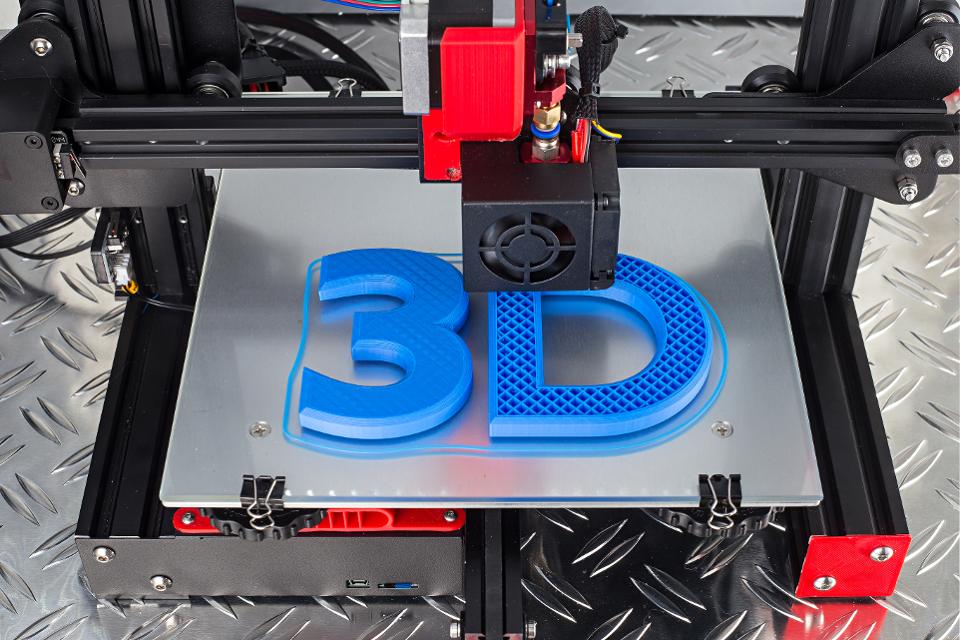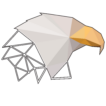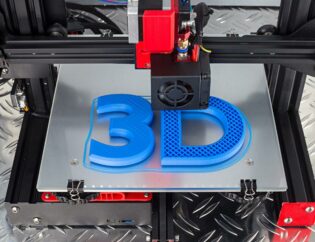
Polyoxymethylene (POM), also known as acetal or Delrin, is a high-performance engineering thermoplastic known for its exceptional mechanical properties, low friction, and excellent dimensional stability. These characteristics make POM an attractive material for various industrial applications. In recent years, the advent of 3D printing technology has opened new avenues for utilizing POM in additive manufacturing. This blog will provide an in-depth exploration of POM 3D printing service, covering its unique characteristics, challenges, technological innovations, applications, and future potential, supported by specific examples and case studies.
Unique Characteristics of POM in 3D Printing
- Mechanical Properties
POM is renowned for its high strength, stiffness, and toughness. These properties make it suitable for producing durable and robust parts that can withstand significant mechanical stress. POM's high tensile strength and impact resistance are particularly advantageous for applications requiring long-lasting and reliable components.
- Low Friction and Wear Resistance
One of the standout features of POM is its low coefficient of friction, which results in excellent wear resistance. This makes POM ideal for applications involving moving parts or components that experience frequent friction, such as gears, bearings, and bushings.
- Chemical Resistance
POM exhibits excellent resistance to a wide range of chemicals, including solvents, fuels, and oils. This chemical resistance ensures that POM parts maintain their integrity and performance in harsh environments, making them suitable for automotive, aerospace, and industrial applications.
- Dimensional Stability
POM's low moisture absorption and high dimensional stability ensure that printed parts maintain their shape and size over time. This characteristic is crucial for applications where precision and accuracy are paramount.
- Thermal Properties
POM has a relatively high melting point (around 175°C to 180°C) and good thermal stability, allowing it to withstand elevated temperatures without significant degradation. This thermal resistance makes POM suitable for applications requiring exposure to high temperatures.
Challenges of POM 3D Printing
- Warping and Shrinkage
One of the primary challenges in POM 3D printing in India is warping and shrinkage. POM has a high crystallinity, which can lead to significant shrinkage during the cooling process. This shrinkage can cause warping, resulting in dimensional inaccuracies and print failures.
- Adhesion Issues
POM's low surface energy makes it challenging to achieve good adhesion between the printed layers and the print bed. Poor adhesion can lead to print detachment and warping, especially for larger parts when 3D Printing in Bangalore.
- Odor and Fumes
During the printing process, POM can emit strong odors and potentially harmful fumes. Proper ventilation and the use of fume extraction systems are essential to ensure a safe working environment.
- Limited Availability of Filaments
Compared to more common 3D printing materials like PLA and ABS, POM filaments are less widely available. This limited availability can make it challenging for users to source high-quality POM filaments for their projects.
Technological Innovations in POM 3D Printing
Advanced Slicing Software
Recent advancements in slicing software have improved the ability to print with POM. These software tools offer features such as optimized print settings, advanced support structures, and enhanced adhesion techniques to address the challenges associated with POM 3D printing Bangalore.
Example: Simplify3D
Simplify3D is a popular slicing software that provides advanced settings for optimizing POM 3D printing. The software allows users to fine-tune print parameters, such as temperature, speed, and cooling, to achieve better print quality and reduce warping.
Heated Print Beds and Enclosures
The use of heated print beds and enclosed build chambers has significantly improved the success rate of POM 3D printing service in India. Heated beds help maintain a consistent temperature, reducing warping and improving layer adhesion. Enclosures provide a controlled environment, minimizing temperature fluctuations and drafts that can affect print quality.
Example: Raise3D Pro2 Plus
The Raise3D Pro2 Plus is a professional-grade 3D printer equipped with a heated print bed and an enclosed build chamber. These features make it well-suited for printing with challenging materials like POM, ensuring better print quality and reliability.
Specialized Adhesion Solutions
To address adhesion issues, manufacturers have developed specialized adhesion solutions, such as adhesive sprays, tapes, and build surfaces, designed specifically for POM 3D Printing service in Bangalore. These solutions improve bed adhesion and reduce the risk of print detachment.
Example: Magigoo PA
Magigoo PA is an adhesive solution designed for use with engineering plastics like POM. It provides strong adhesion to the print bed, reducing warping and improving print success rates.
Multi-Material Printing
Multi-material 3D printing technology allows for the combination of POM with other materials in a single print. This capability enables the creation of complex parts with varying properties, such as combining POM's mechanical strength with the flexibility of other materials.
Example: Ultimaker S5
The Ultimaker S5 is a versatile 3D printer capable of multi-material printing. It allows users to print with POM alongside other materials, enabling the creation of composite parts with enhanced functionality.
https://www.youtube.com/watch?v=OCLMz05atEA&pp=ygUPcG9tIDNkIHByaW50aW5n
Applications of POM in 3D Printing
Automotive Industry
POM's mechanical properties, chemical resistance, and low friction make it an ideal material for automotive applications. POM 3D Printing online allows for the rapid prototyping and production of functional automotive components.
Example: Gears and Bearings
POM's low friction and wear resistance make it suitable for printing gears and bearings used in automotive systems. These components benefit from POM's durability and ability to withstand mechanical stress.
Case Study: Ford Motor Company
Ford Motor Company has utilized POM 3D printing for prototyping and producing functional components for their vehicles. The use of POM 3D Printing services has enabled Ford to create durable and reliable parts, reducing development time and costs.
Aerospace Industry
In the aerospace industry, POM's high strength-to-weight ratio, chemical resistance, and dimensional stability are highly valued. POM 3D Printing services in India allow for the production of lightweight and durable aerospace components.
Example: Structural Components
POM can be used to print structural components such as brackets, clips, and housings for aerospace applications. These parts benefit from POM's mechanical properties and resistance to harsh environments.
Case Study: Boeing
Boeing has explored the use of POM 3D printing for producing lightweight structural components for their aircraft. The ability to create complex geometries and reduce weight has contributed to improved fuel efficiency and performance.
Industrial Applications
POM's durability, low friction, and chemical resistance make it suitable for various industrial applications. POM 3D Printing services in Bangalore enable the production of custom and functional parts for machinery and equipment.
Example: Conveyor Belt Components
POM's low friction and wear resistance make it ideal for printing components used in conveyor belt systems, such as rollers, guides, and sprockets. These parts benefit from POM's ability to withstand continuous movement and friction.
Case Study: Siemens
Siemens has utilized POM 3D printing for producing custom components for their industrial machinery. The use of POM has enabled Siemens to create durable and reliable parts, reducing maintenance and downtime.
Medical Devices
In the medical field, POM's biocompatibility, chemical resistance, and dimensional stability are advantageous. POM affordable 3D Printing services allow for the production of custom medical devices and components.
Example: Surgical Instruments
POM can be used to print surgical instruments such as clamps, forceps, and handles. These instruments benefit from POM's strength, chemical resistance, and ability to be sterilized.
Case Study: Medtronic
Medtronic, a leading medical device company, has explored the use of POM 3D printing for producing custom surgical instruments. The ability to create precise and durable instruments has contributed to improved surgical outcomes.
Consumer Products
POM's mechanical properties, low friction, and chemical resistance make it suitable for various consumer products. POM online 3D Printing India enables the production of custom and functional items.
Example: Kitchen Utensils
POM's chemical resistance and ability to withstand high temperatures make it ideal for printing kitchen utensils such as spatulas, tongs, and handles. These utensils benefit from POM's durability and ease of cleaning.
Case Study: OXO
OXO, a well-known kitchenware brand, has utilized POM 3D printing for prototyping and producing custom kitchen utensils. The use of POM has enabled OXO to create durable and functional products, enhancing user experience.
Our manufacturing experience can help you make decisions faster.
Choose one to get started
Future Potential of POM 3D Printing
Advancements in Material Science
Ongoing research and development in material science are expected to lead to the creation of new POM formulations with enhanced properties. These advancements will expand the range of applications and improve the performance of POM 3D printed parts.
Example: Reinforced POM
Researchers are exploring the development of reinforced POM composites, such as carbon fiber-reinforced POM. These composites offer improved mechanical properties, making them suitable for demanding applications in aerospace and automotive industries.
Improved Printing Techniques
Advancements in 3D printing technology, such as improved print head designs and optimized printing parameters, will enhance the quality and reliability of POM online 3D printing Bangalore. These improvements will address challenges such as warping and adhesion issues.
Example: High-Temperature Extruders
The development of high-temperature extruders capable of maintaining consistent temperatures will improve the print quality of POM. These extruders will enable better layer adhesion and reduce warping, resulting in more reliable prints.
Integration with IoT and AI
The integration of POM 3D printing service with IoT and AI technologies will lead to smarter manufacturing processes. Predictive maintenance, real-time monitoring, and automated quality control are some of the potential benefits.
Example: Smart 3D Printers
Smart 3D printers equipped with IoT sensors and AI algorithms can monitor the printing process in real-time, detecting potential issues and optimizing print parameters. This integration will improve print quality and efficiency, reducing downtime and waste.
Expansion into New Industries
As POM 3D printing technology matures, it will find applications in new industries such as healthcare, where it can be used for printing custom medical devices, implants, and even bioprinting tissues and organs.
Example: Custom Implants
POM's biocompatibility and mechanical properties make it suitable for printing custom implants, such as dental and orthopedic implants. These implants can be tailored to individual patients, improving fit and performance.
Case Study: Stryker
Stryker, a leading medical technology company, has explored the use of POM 3D printing for producing custom orthopedic implants. The ability to create precise and durable implants has contributed to improved patient outcomes.
Sustainability and Recycling
The development of sustainable and recyclable POM formulations will contribute to the environmental sustainability of 3D printing services. These formulations will reduce waste and enable the recycling of printed parts.
Example: Recycled POM Filaments
Researchers are exploring the development of recycled POM filaments made from post-consumer and post-industrial waste. These filaments offer a sustainable alternative to virgin POM, reducing the environmental impact of 3D printing.
Conclusion
POM (Polyoxymethylene) 3D printing represents a significant advancement in additive manufacturing, offering unique characteristics such as high strength, low friction, chemical resistance, and dimensional stability. While there are challenges to overcome, ongoing technological innovations and the growing adoption of POM in various industries suggest a bright future. As POM 3D printing continues to evolve, it will undoubtedly unlock new possibilities and transform the way we approach manufacturing and production. The future potential of POM 3D printing is vast, with advancements in material science, improved printing techniques, integration with IoT and AI, expansion into new industries, and sustainability efforts paving the way for new applications and improved performance.


